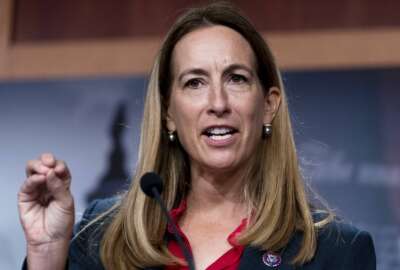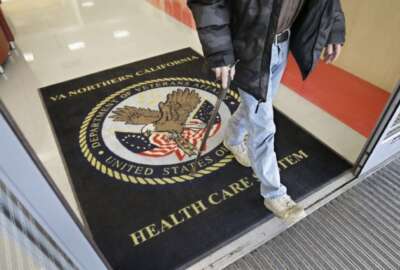

In this white paper, Deloitte's Amira Choueiki examines how to enable good choices in a daunting financial environment. Tasks required to maintain personal finances...
By Amira Choueiki
Deloitte
This white paper is one of six written by Deloitte describing inexpensive, simple solutions to some of society’s most seemingly intractable problems. These solutions don’t involve billion-dollar investments or comprehensive tax reform. Instead, they’re based on behavioral insights that seek to explain the way we make decisions, whether consciously or unconsciously.
Tasks required to maintain personal finances are often the most tedious, confusing, and dreaded of everyday chores. While these personal actions seem to affect only individual households, if there’s one thing the 2008 financial crisis taught us, it’s that a financially literate (or illiterate) populace making micro- level choices can have profound macroeconomic implications.
From the day someone opens their first checking account with a parent co-signer, to registering for their first credit card at a college orientation, to signing a mortgage or saving money for a new child, we are discovering new ways to enable citizens to make financially responsible decisions. Here are a few examples.
Make the intangible tangible. Many would agree, while buying feels good now, saving feels good…later1. Humans discount future benefits – meaning we seek instant gratification we can experience in the present over a reward that will come later. Only 20% of American households have access to a financial advisor – a resource that can assist in better understanding and feeling the tangible benefits of day-to-day responsible financial behavior.
Additionally, 95% of women surveyed by a 2011 Prudential study stated that they are directly involved in their households’ financial decision-making – yet they lack confidence with “fewer than two in 10 women feeling “very prepared” to make wise financial decisions, half indicating that they “need some help,” and one- third feeling that they “need a lot of help.” This is emphasized by the fact that women don’t always feel comfortable walking into a commercial banking institution – the same study found that over 60% of women surveyed preferred seeking financial guidance from family and friends rather than a professional advisor.
Customized self-assessment and financial tools enable citizens, even those who may be intimidated by traditional institutions, to visualize how far they’ve come, compare themselves to other households (playing to our tendency to look to and conform to the behavior of those around us to inform our decision-making), and manage money while developing improved personal financial capabilities. Designing platforms such as this – that provide clear, simple, and easy-to-use information and features from everyday finances to home mortgages, college savings, and tax preparation – could help make the abstract and far-off manageable.
One example is HelloWallet – an online platform purchased by employers for their employees. It integrates many of the features discovered to assist households in financial planning: integrating accounts, credit cards, savings and 401Ks, investments and more in a single platform, providing tools to set financial goals and track progress visually, calculating budget and ‘safe to spend’ limits, and offering customized online financial guidance and advice. The results are significant: 50% of members improve 401(k) contributions, over 33% begin contributing to an emergency fund, reducing plan leakage, and 90% of customers feel more financially secure and thereby less distracted at work.
Allow citizens to ‘opt-out’ in mindful moments. It’s no surprise that year after year, the American Psychological Association’s annual Stress in America Survey shows that Americans cite the #1 barrier to lifestyle change and improvement as lack of willpower. Understanding willpower as a foundational challenge for us all, what if we could proactively manage choices we may make in an instant of weakness? Clear methods for disenrollment from credit card offers, overdraft fees, and more could empower Americans. Gambling is a leisure activity regulated by states that can lead to potentially severe financial consequences for the well-being of individuals and families. Gambling is also addictive, and many citizens need real help controlling their unsafe gambling habits. Casino self- exclusion programs allow individuals to ban themselves from entering a casino by agreeing to be charged with trespassing, denied any winnings, and to pay a hefty fine if caught inside a casino.
This idea has gained traction in Australia – all gambling providers there are required to provide a simple, free method to allow customers to self-exclude from their services. In the United States, 16 states have set up self-exclusion programs. In Missouri, the first state to implement such a program, all study participants reported gambling less, with a full 40% abstaining from gambling for six months or more. Nearly 80% of the sample exhibited pathological gambling behavior prior to enrolling in the self-exclusion program, but only 15% still exhibited those symptoms 3 or more years after enrollment2. Perhaps most importantly, all study participants reported significant improvements in all quality of life measures evaluated, from relationship with family to physical fitness.
Make responsibility the default. In contrast to the example above, there are areas in which a mindless opt-in can be beneficial. Default settings are pervasive in our current financial system. We know from research and common sense that most people will simply go with the ‘status quo’ because fighting inertia requires awareness and effort. Signing up for a 401K plan can feel arduous, but companies that automatically enroll their employees in a 401k plan find an 85% subscription rate, compared to 70% when employees self-enroll3. A Retirement Security Project report estimated that “the net effect on national saving as a result of Automatic 401(k) alone would be an increase of about .34% of GDP – almost 44 billion dollars per year4.” Imagine the impact if this principle was applied to automatic escalation of contributions, investments, IRAs, or even auto- filled tax or FAFSA forms.
Automatic enrollment has a significant effect – according to the WorldatWork Trends in 401(k) Plans March 2013 Report: “When taken in aggregate, 30% of companies reported employee 401(k) plan participation in the 80%‐89% range. But when broken down by whether the company has auto enrollment, a significant disparity in employee participation emerges. 37% of companies with auto enrollment reported participation in the 80%‐89% range, but only 21% of companies without auto enrollment report similar 80%‐89% participation. Further, 36% of those with auto enrollment reported participation in the “90% or greater” range while only 19% without auto enrollment report similarly in the “90% or greater” range.”
Moving Forward
The insights and related behavioral interventions described in this series are designed to be implemented quickly – they don’t necessitate an act of congress or laborious re-writing of existing policy. Many require a small budget but have great impact. However, even evidence-based changes like those above can have unintended consequences. That’s why we recommend coupling implementation with rigorous but rapid performance evaluation. Rapid testing and agile evaluation can enable agencies to refine strategy and measure the positive impact that behavioral insights can generate to drive mission achievement.
As used in this document, “Deloitte” means Deloitte Consulting LLP, a subsidiary of Deloitte LLP. Please see www.deloitte.com/us/about for a detailed description of the legal structure of Deloitte LLP and its subsidiaries. Certain services may not be available to attest clients under the rules and regulations of public accounting.
Read all six of Deloitte’s white papers on behavioral insights.
The sentence that can save government $45 million
Behavioral insights for sustainable behavior
Behavioral insights for healthy behavior
Behavioral insights for transportation
1. Loewenstein, George and Elster, Jon. (1992) Choice Over Time. Russell Sage Foundation.↩
2. Nelson, S. E., Kleschinsky, J. H., LaBrie, R. A., Kaplan, S., & Shaffer, H. J. (2010). One decade of self-exclusion: Missouri casino self- excluders four to ten years after enrollment. Journal of Gambling Studies, 26(1), 129-144.↩
3. Automatic Enrollment 401(k) Plans for Small Businesses (2011, Dec.) Internal Revenue Service, Publication 4674 Catalog Number 51461H.↩
4. Iwry, J., Gale, W. and Orszag, P. (2006) The Potential Effects of Retirement Security Project Proposals on Private and National Saving: Exploratory Calculations, p. 4.↩
Copyright © 2025 Federal News Network. All rights reserved. This website is not intended for users located within the European Economic Area.



